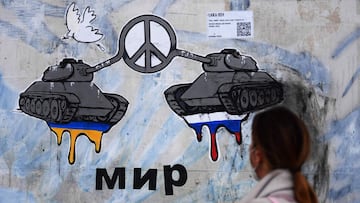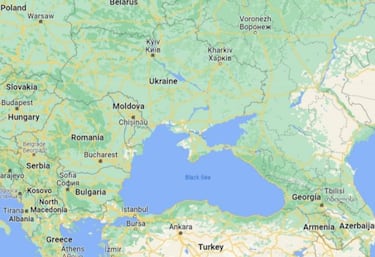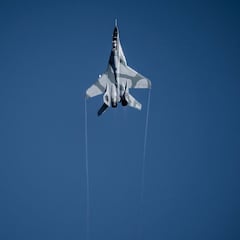Where is Crimea, who does it belong to and what happened in 2014 between Russia and Ukraine?
Crimea has had a long history and has changed hands throughout time. Russia’s annexation of the territory in 2014 is another page in that saga.

The Crimea peninsula is located on the northern coast of the Black Sea connect to Ukraine by a narrow isthmus. It has been an important crossroads in trading networks for millennia with a multicultural history.
Possession of the territory has been fought over since the beginning of recorded history. The most recent exchanging of hands came in 2014 when Russia annexed Crimea, something the international community condemned and lacks formal recognition.
Also see:
- Can Ukraine join EU and how long would it take?
- Putin’s decades-long grip on power
- Ghost of Kyiv: unconfirmed Ukrainian MiG-29 pilot credited with six kills
- Russian vodka faces boycott over Ukraine invasion
The Crimea peninsula before 2014 annexation
In more recent history, the Crimea was controlled by the Khanate of Crimea, which consisted of Tartar remnants of the Golden Horde who had conquered the area in the 13th century. The Khanate in turn was a vassal state to the Ottoman Empire until 1774 when it gained its independence after Russia defeated the Turks in one of many wars they fought. Crimea didn’t come under Russian control though until 1783 when Catherine the Great annexed the peninsula outright.
The Tartars briefly declared Crimea to be an independent democratic republic after the collapse of the Russian Empire in 1917. However, after the Bolsheviks won the Russian Civil War it became an autonomous Soviet republic in 1921. Like Ukraine, the Tartars suffered gravely under Joseph Stalin during the collectivization process and suppression of the ethnic minorities that he implemented. Accusing them of collaborating with the Nazis, Stalin had the remaining Tartar population forcibly relocated and removed the regions autonomous status.
It wasn’t until 2015 that Ukraine officially recognized the deportation of around 200,000 Tartars as a genocide. It wasn't until after the collapse of the Soviet Union that Tartars were allowed to return to Crimea, their population had grown to around 300,000 by 2014.
After Stalin’s death, Crimea was officially made part of Ukraine in 1954. Nikita Khrushchev transferred possession of the territory to mark the 300th anniversary of the Pereyaslav Agreement which brought Ukraine under Russian rule. Upon the formal dissolution of the Soviet Union in 1991 Crimea formed part of an independent Ukraine as an autonomous region within.

Why did Russia annex Crimea in 2014?
Russia and Ukraine had an agreement whereby they would share the military port at Sevastopol, where Russia’s Black Sea Fleet had been stationed since coming under Russian control. Pro-Russian Ukrainian President Viktor Yanukovych upon assuming office in 2010 extended the lease for Russian use of the port until 2042.
However, he fled Ukraine in February 2014 amid a large-scale protests, called Euromaidan. The protests were started by his refusal to sign an agreement for closer ties with the European Union.
Almost immediately problems began in Crimea. Within days strange bands of armed gunmen, called “little green men” began seizing government buildings in Crimea. They obviously looked like regular Russian military forces but according to Putin they were local members of "self-defence groups."
With very little notice, in March 2014 Crimeans held a referendum, which was boycotted by the opposition, that overwhelmingly voted for their region to become a part of Russia although there were no international observers to verify the result. The United Nations and most of the world sees Crimea's secession vote as illegitimate.
Shortly after the referendum Putin signed accession treaty making Crimea part of the Russian Federation once again. To punish Moscow, the US and European Union imposed economic sanctions on Russia but they had little effect on Putin’s posture toward returning Crimea to Ukraine.
Why does Putin want Crimea?
Related stories
Crimea is a strategically important with its warm water port as other Russian ports freeze over in winter. It was one of the reasons why Peter the Great began pushing the Russian Empire’s borders south to the Black Sea, completed by Catherine the Great.
It also provides Russia with “an unsinkable aircraft carrier” allowing it to project air power further south and deeper into Europe. A year after annexing Crimea several bombers were transferred to airbases on the peninsula. With the territory under full Russian control the aircraft could safely return to Crimea a source in the Defense Ministry told Interfax.


